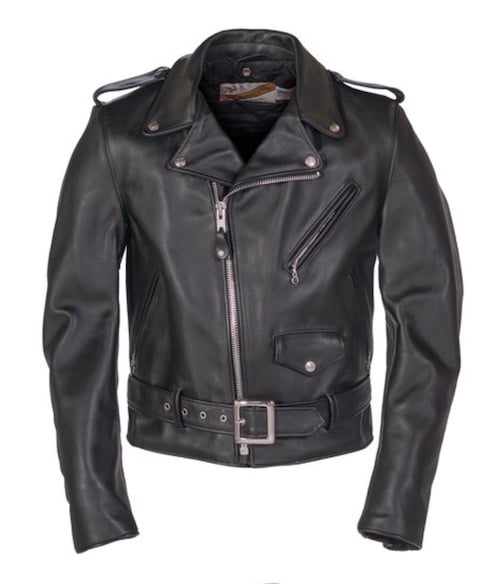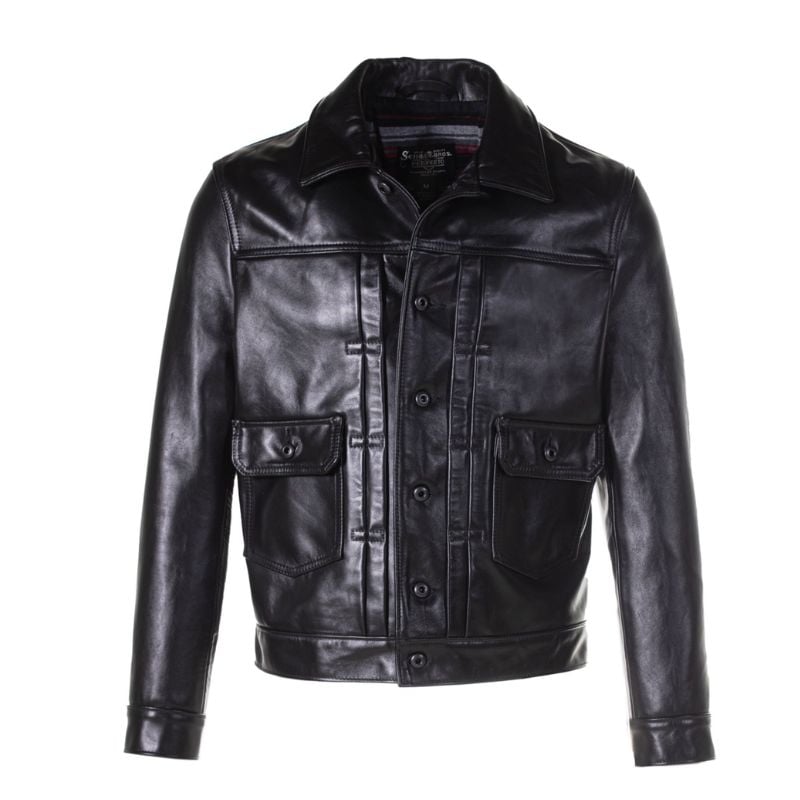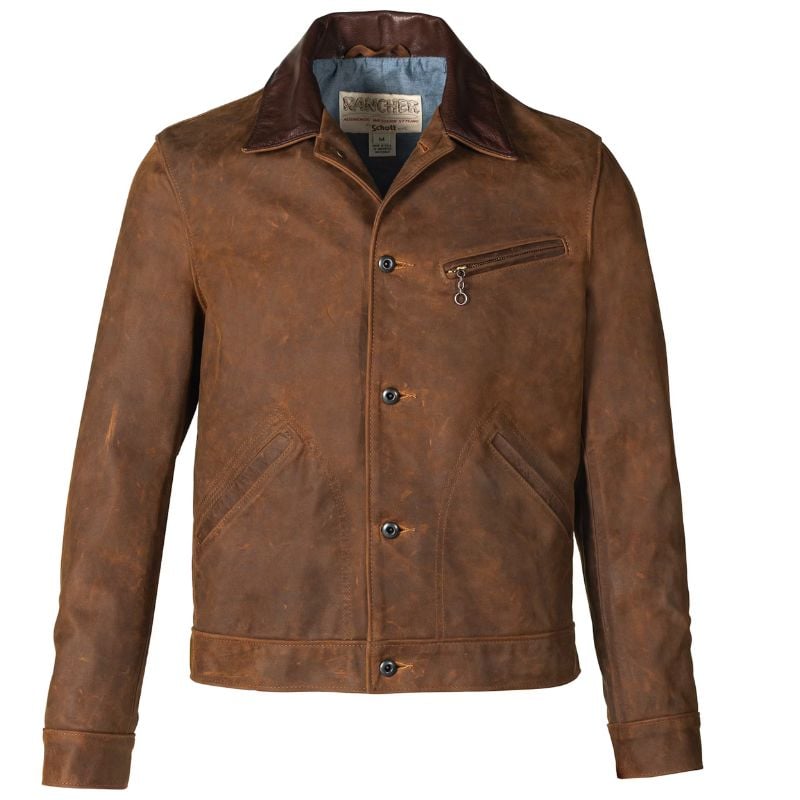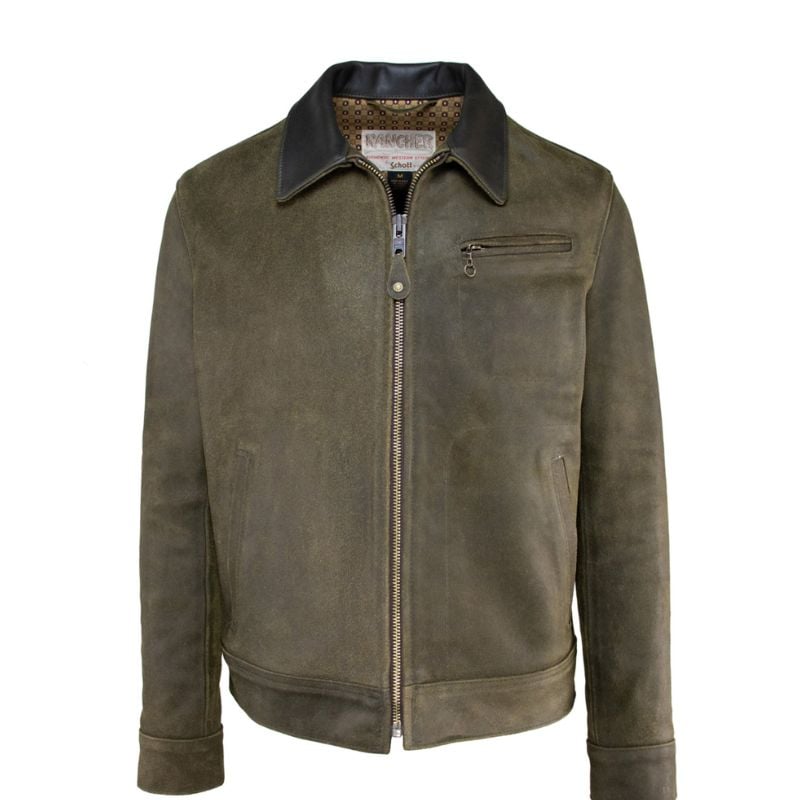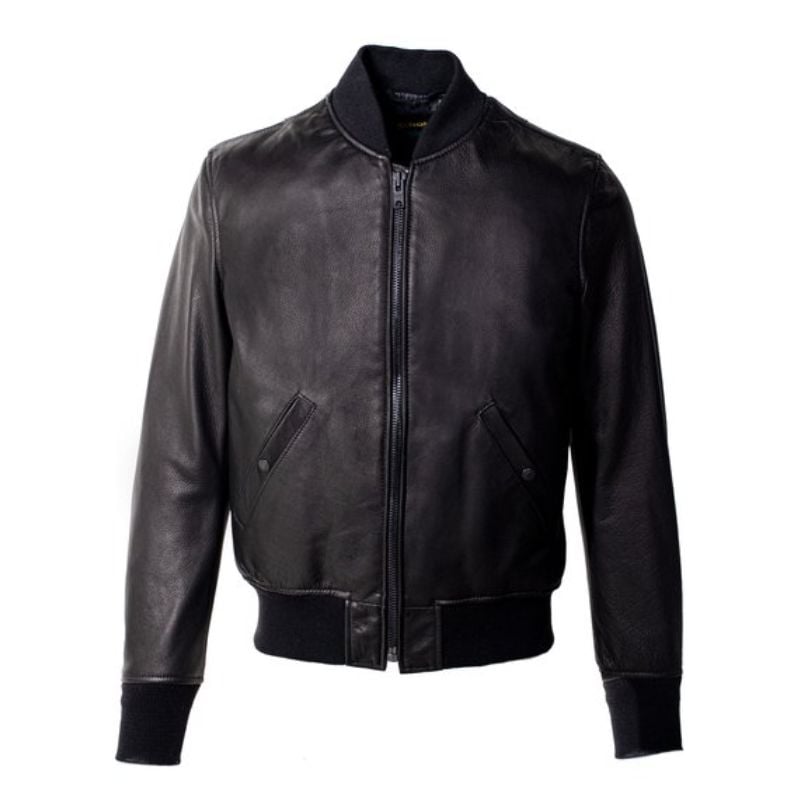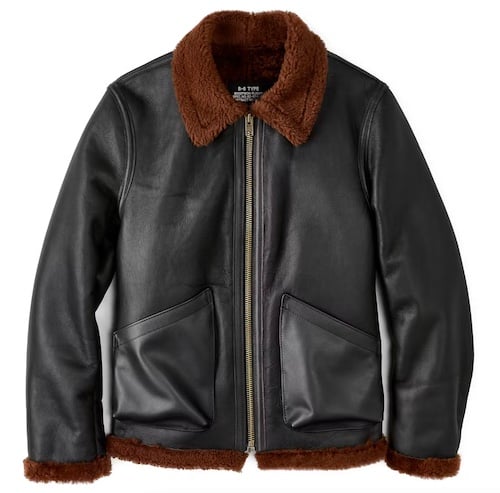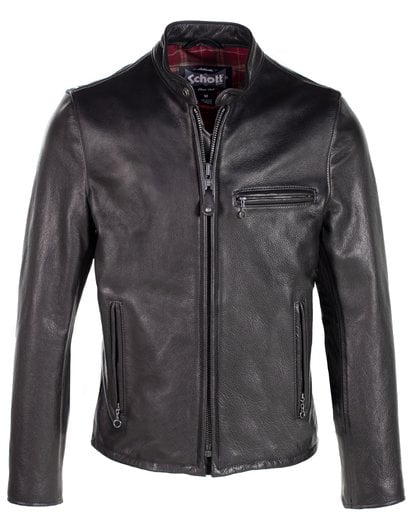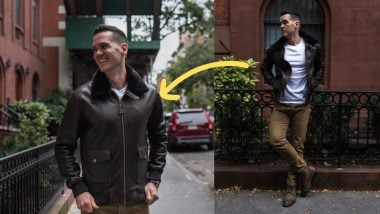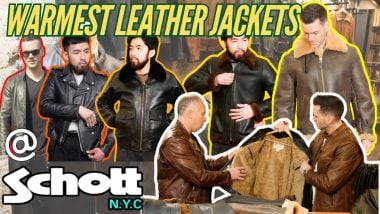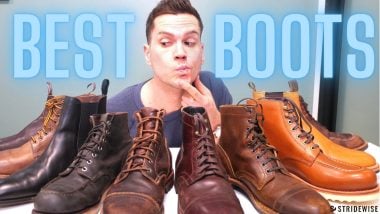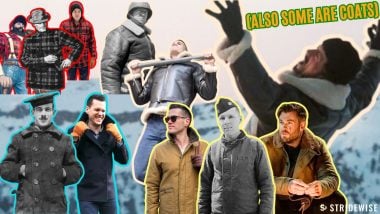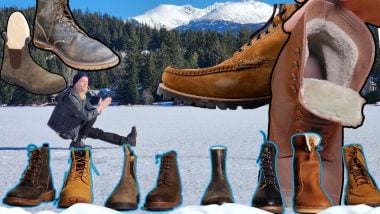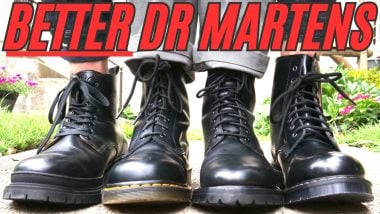5 Types of Leather Jackets You Should Know (According to Experts)
There is no item of clothing cooler than a leather jacket, but what kind of leather jacket should you look for? You may have noticed there are dozens of styles of leather jackets, and there seems to be no consistency in naming them — like, how are so many different models all called “bomber jackets”?
So to clarify things, we went to the most authoritative source possible: Jason Schott of Schott NYC, America’s best leather jacket brand.
Schott NYC was the first company to put a zipper on a leather jacket, and they’re behind a huge number of our culture’s most iconic models, perhaps most famously the Perfecto motorcycle jacket you’ll see in this article. So you’re in safe hands.
At their store on Howard Street in Manhattan, we narrowed down five kinds of leather jackets to simplify your choice — and we added some advice on which model might work best for your own style.
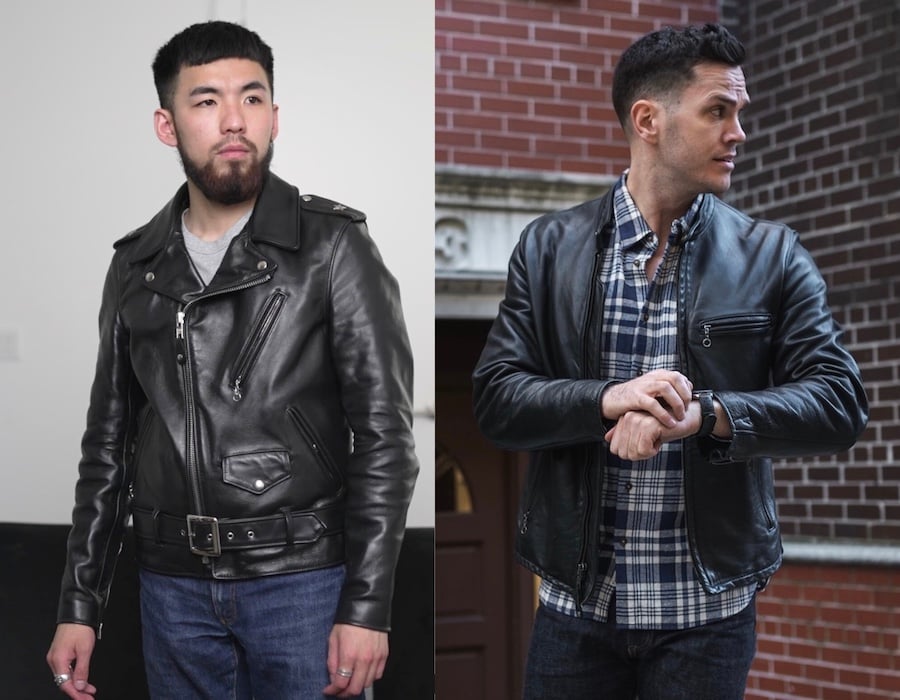
1. Leather Motorcycle Jackets
- Thick leather (3oz +) to protect the rider
- Designed to block wind with a zipper opening and zipper sleeves
- Action back and/or armpit footballs allow more mobility in the arms
- Schott’s Perfecto and Cafe Racer are best best-known models
We’re starting with motorcycle jackets, one of the most iconic leather jacket styles.
“The most important features are the weight of the leather, the functionality, blocking the wind, and protecting your skin,” Schott says. “Many companies do what they call a motorcycle jacket look, but if you can’t wear it on a motorcycle, I wouldn’t qualify for it.”
Motorcycle jackets have many different names: double riders, racers, biker jackets — they aren’t identical, but they should share those core features: thick leather, extra arm mobility, and zipper closures.
Easily the most iconic motorbike jacket ever made, the Perfecto is an icon both for its frequent appearances in pop culture and its legendary durability.
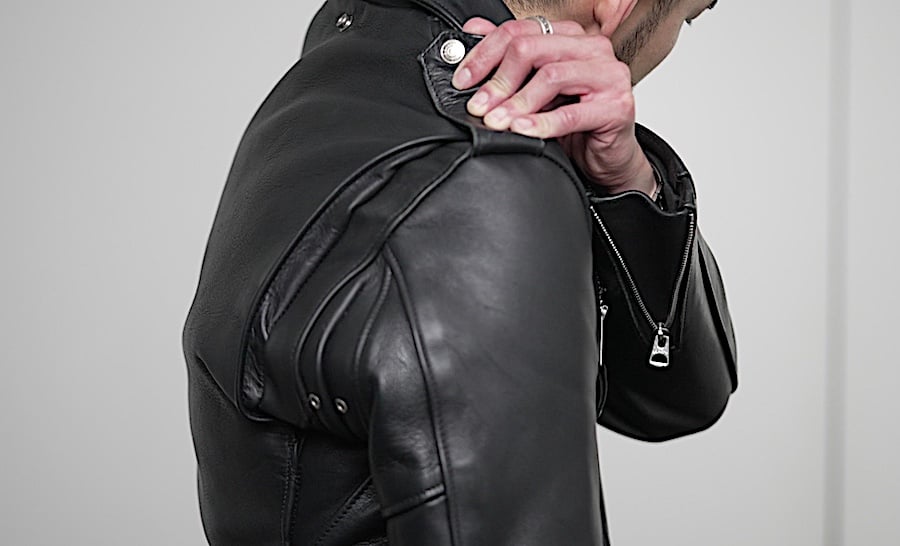
“The arm mobility is an important part,” says Schott. “When you’re holding onto the motorcycle handles, there’s elastic that’s connecting the two arms under this back panel, so when you reach your arms out, it’s going to snap back into shape. So it gives you that extra range of motion. And oftentimes we’ll put these underarm ‘footballs’ on there as well to give you extra range of motion vertically.”

A lot of what Schott calls motorcycle jackets have asymmetric zippers that cross the body diagonally to better block the wind.
“The Perfecto is your classic motorcycle jacket. But you would also call café racers and double riders jackets motorcycle jackets,” he says.
Further Reading
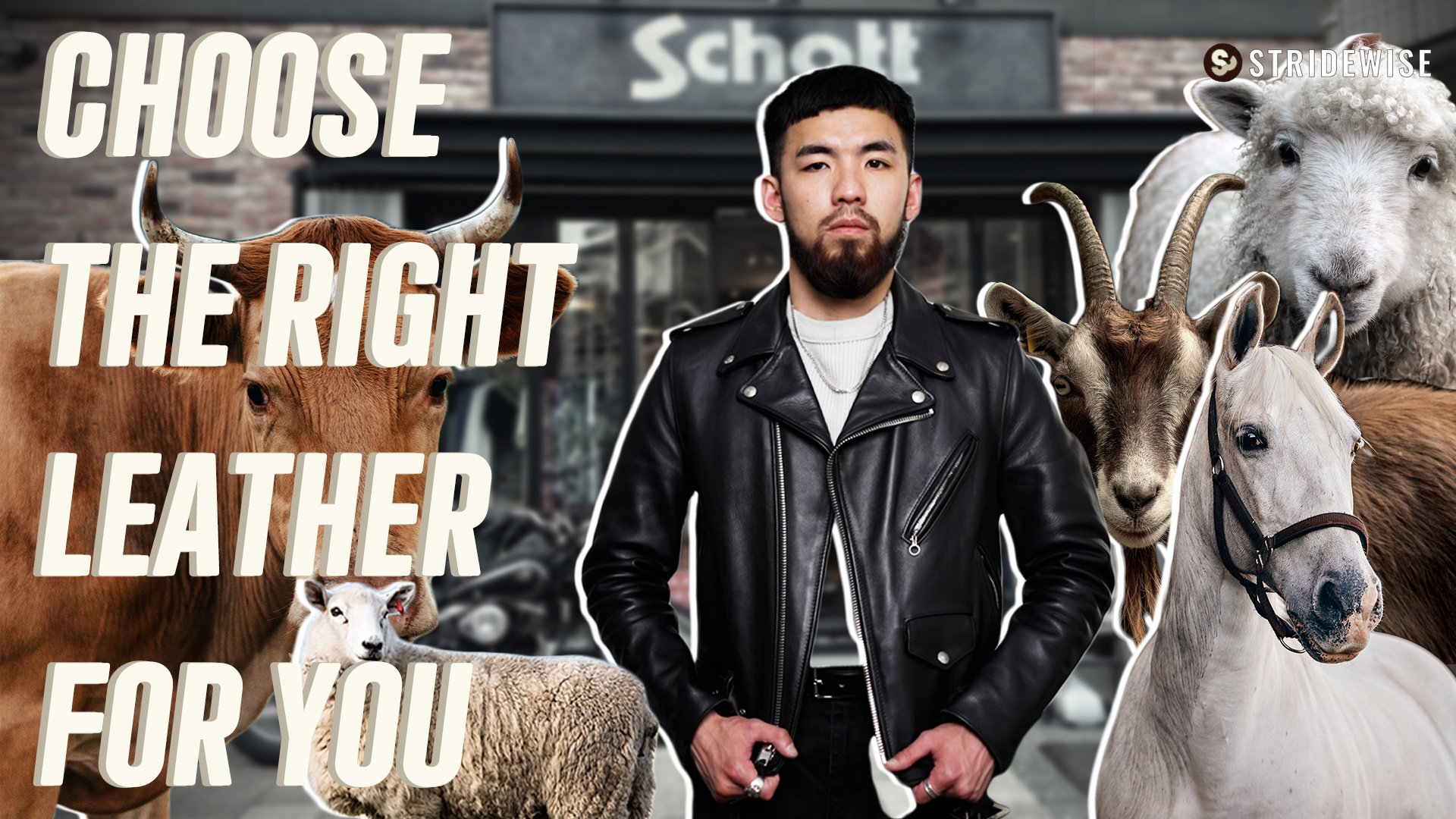
The Best Leather for Jackets According to Experts
Jason Schott also walked us through the best types of leather for jackets. Learn more →
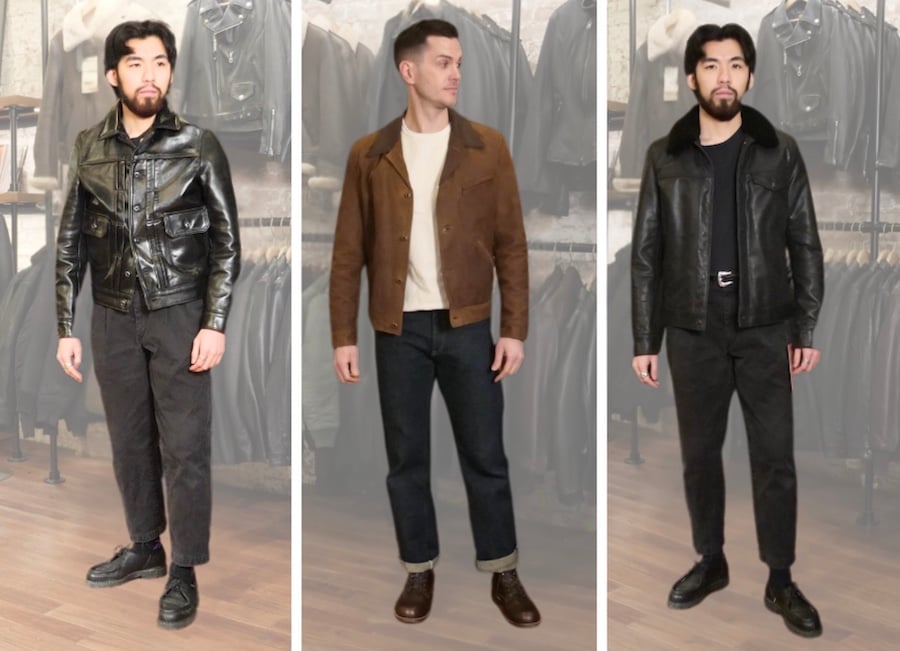
2. Leather Trucker Jackets
- Short, similar to denim jackets
- Waist belt
- Button-up closure, no zipper
- Pointed collar
When people hear trucker jackets, they think of denim or canvas jackets, but the leather trucker jacket deserves its own category.
“A trucker jacket’s important elements are the waistband at the bottom, the shorter length — generally about 25 inches long — and it closes with buttons or snaps instead of a zipper,” says Schott.
You might see trucker jackets called mechanic and rancher jackets in this category, which you might call subtypes.
On top of that, some people search for “leather denim jacket” on the internet, which you might think makes no sense — but they are likely looking for a trucker-style leather jacket like this:
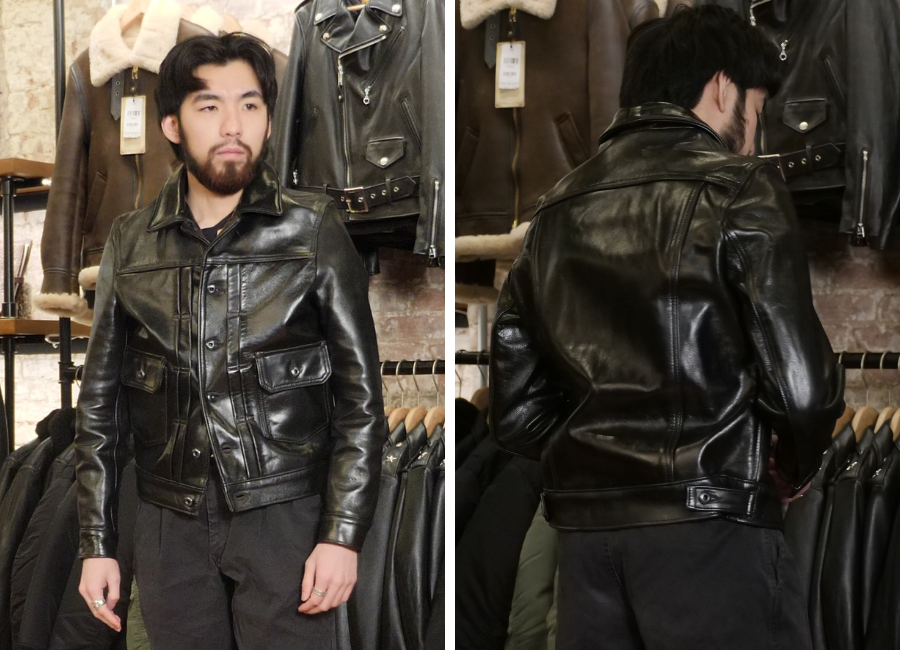
This thick horsehide jacket, based on the style of denim trucker jackets, has metal shank buttons and vertical front pleating.
“We’ve also got a nubuck mechanic’s jacket, which resembles a classic trucker jacket,” Schott says. After I said the contrast collar and the “Rancher” on the label made me think of something a farmer would wear, he answered: “Because of the length and the waistband, I would consider it a trucker jacket as well.”
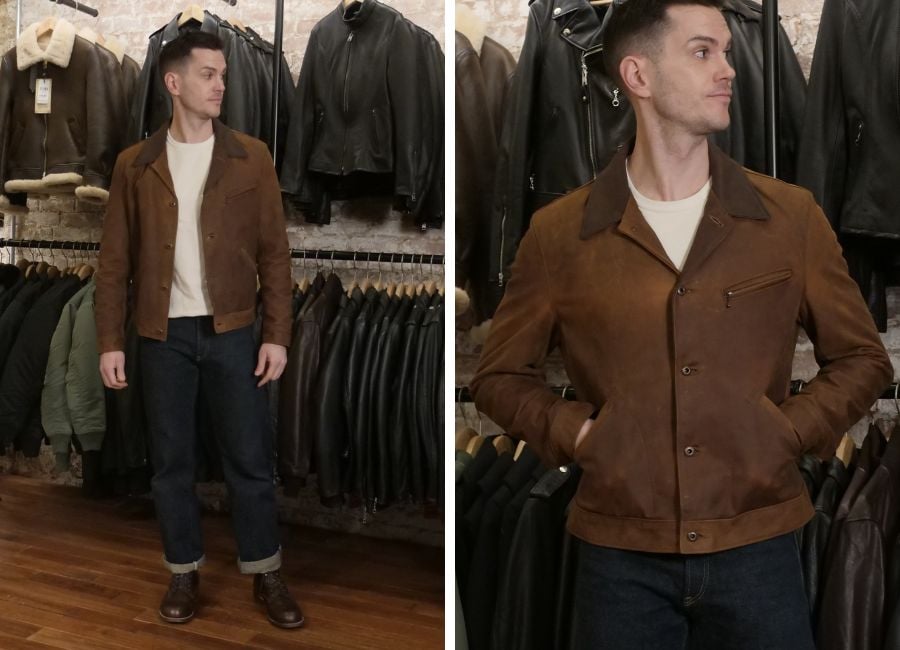
Made from durable, hand-cut nubuck and a chambray lining, this jacket will take a beating and look great.
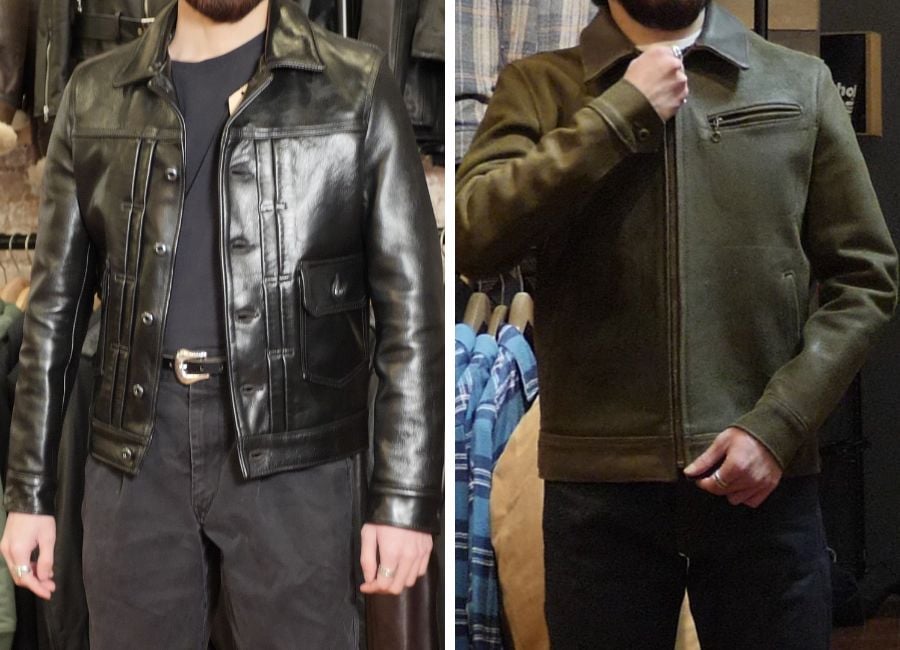
3. Leather Delivery Jacket
- Delivery jackets are a little longer than truckers
- Zipper closure
- Pointed, “shirt-like” collar
- Generally quite minimalist and low on features
- Delivery jackets have a kidney back panel
My current favorite type of leather jacket, I found, is what’s called a delivery jacket.
Personally, I like my leather jackets low on features: regular pointed collar, smooth front panels, not a lot of jangly zippers or buckles. I also have a long torso, so I tend to look for slightly longer jackets. Delivery jackets check off every box I’m looking for.
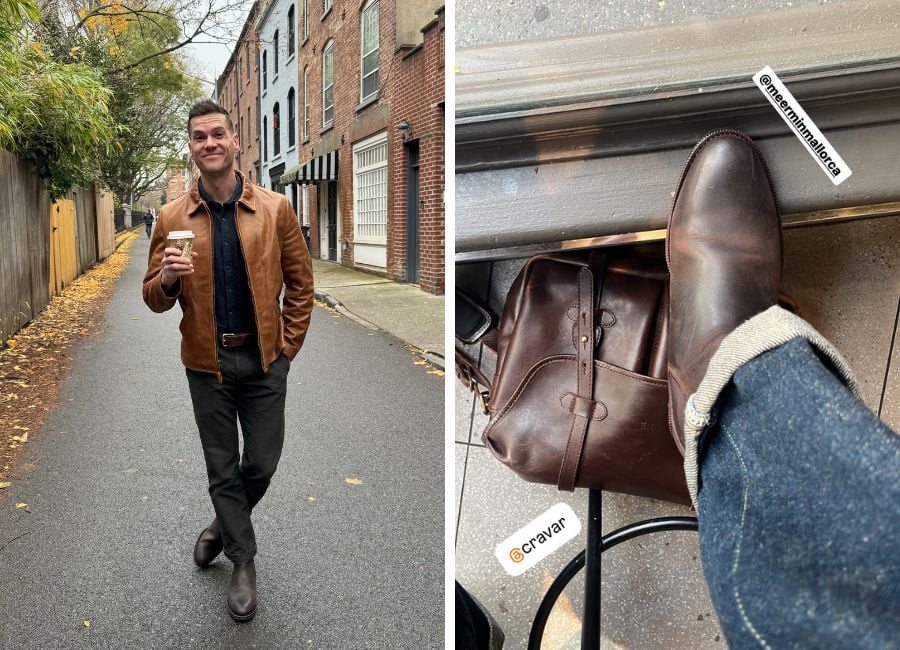
“It’s a very classic, basic jacket,” says Schott. “It also usually has a ‘kidney back panel.’ If you look at the back, I’m talking about how many delivery jackets will have this reinforcement at the bottom. I think it’s just a classic look, and I think if somebody is looking for a basic leather jacket that isn’t too in, this is a perfect place to go.”
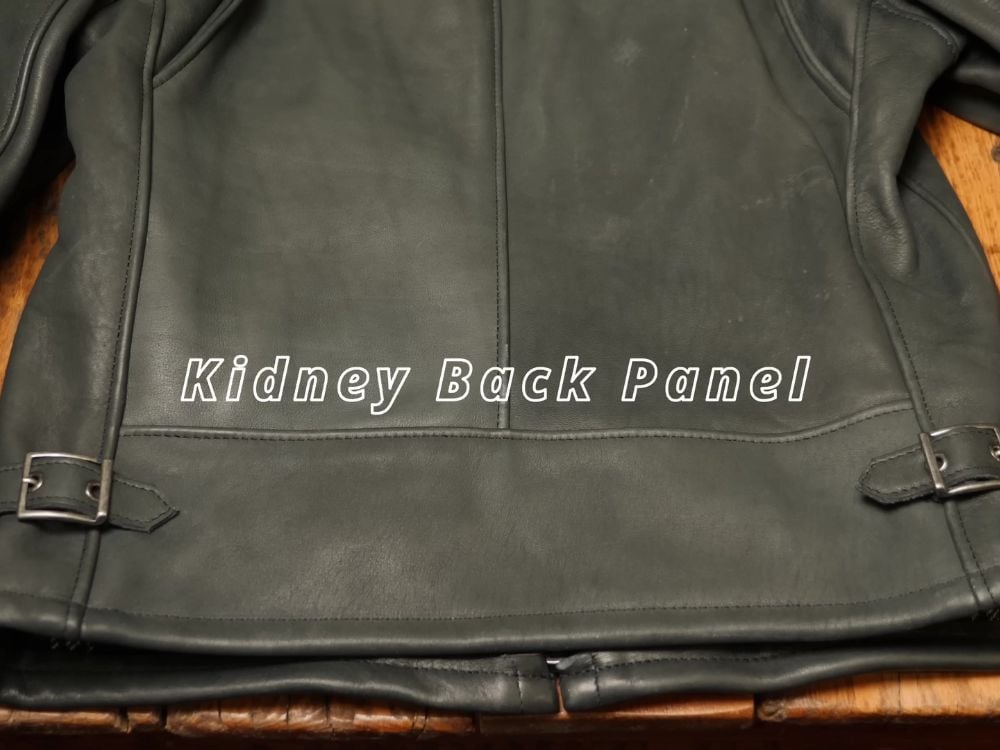
Very cool oil-tanned rough-out suede, zip front closure, and three zip front packets make this a functional and rugged jacket.

4. Leather Bomber vs Flight Jackets
- Flight jacket and bomber jacket are terms used to describe a wide range of jackets produced over 100 years by the US military
- The unifying feature is the knit waistband and wrist cuffs
- An exception to this rule is shearling B3 jackets, which we’ll describe in the next section
- Flight or bomber jackets also have associations with pilots, furry collars, and flap front waist pockets
The terms flight jackets and bomber jackets are often used interchangeably; less often, they’ll also be called aviation jackets or pilot jackets. What they have in common is that they’re modeled after or inspired by jackets worn by pilots in the World Wars — and almost all of them have elasticated knit waistbands and wrist cuffs.
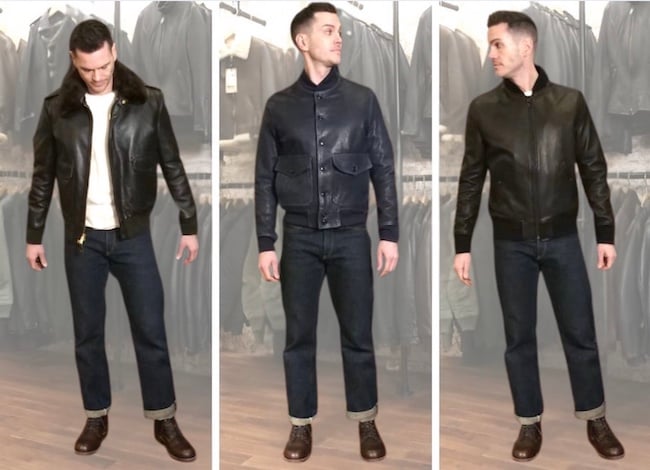
“One of the most important things I would consider for a flight or bomber jacket would be the knit waistband,” says Schott. “Military styles inspired all of these bomber jackets and flight jackets. It’s a little bit of a blouson shape, so it’s a little bit tighter in the waist to block the wind, but it’s cut to give you more room to move above the waist.”
The knit waistband and wrist cuffs help block wind and make it easier to size: the elastic waist fit can fit a wider range of belt sizes, and the elastic wrist cuffs mean it’s not such a big deal if the sleeves are a bit long for your arms.
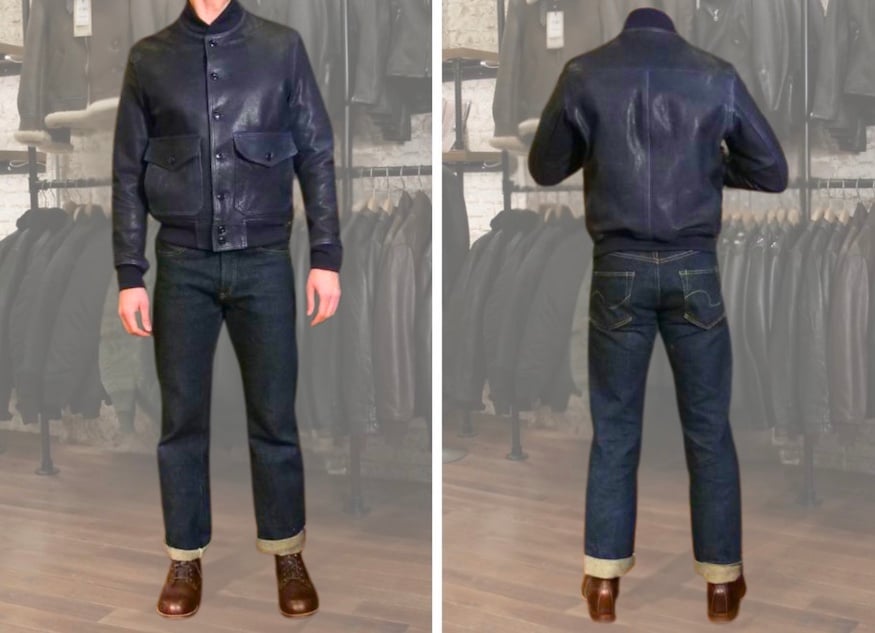
The jacket above, the Type A-1, is also considered a bomber jacket. You might be surprised to hear it, given you’ve probably seen a million brands selling “bomber jackets” that look nothing like it, but look closer: knit waistband, knit wrist cuffs. That’s a bomber — and a very historical look. (Well, except for the blue leather they used.)
Schott's updated take on the classic MA-1 body features a waxy pebbled cowhide leather and oxidized black hardware.
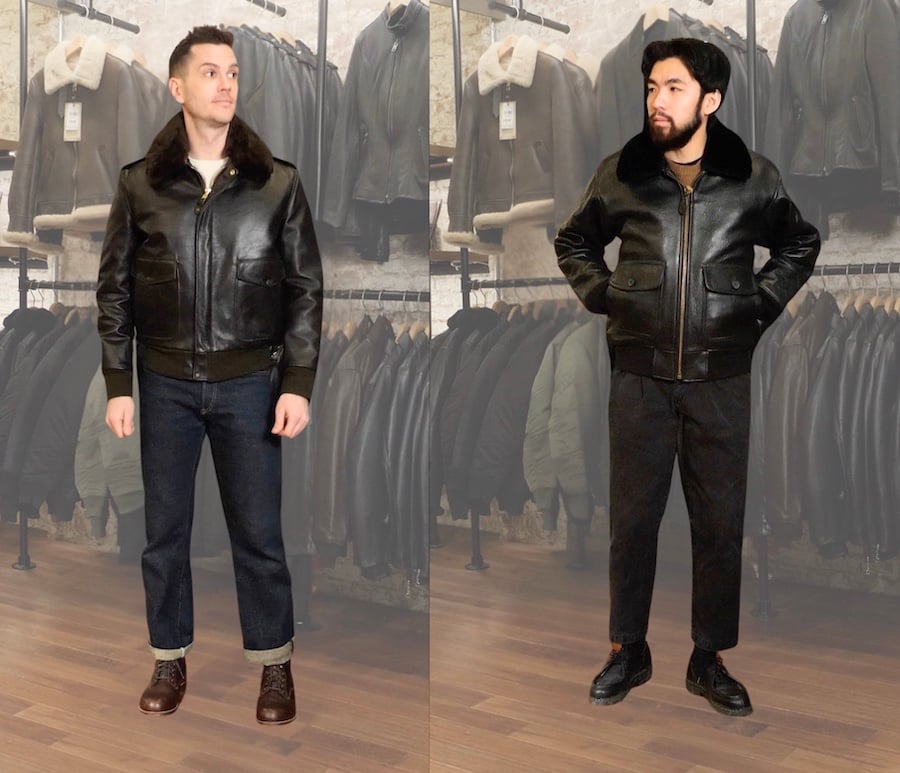
A look that might be more familiar to you is the type A-2 or the similar G-1: they both have the furry collar and two flap front waist pockets that a lot of guys associate with the term “flight jacket.”
Schott NYC’s versions are inspired by these jackets, though not exact reproductions: the original A-2 didn’t have a fur collar.
“The fur collar is really stolen from a G-1, which is also often called a flight jacket,” Schott says. “Both the Type A-1 and the G-2 came about in the same period. The Army Air Forces had the A-2, and the Navy had the G-1.”
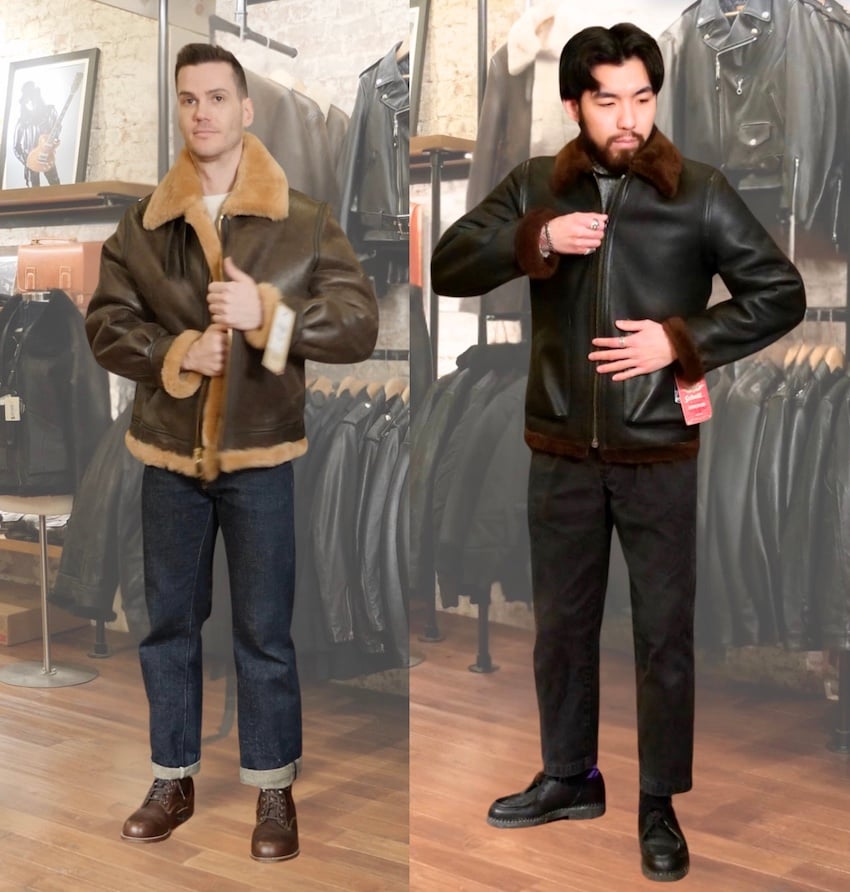
5. World War II’s B-3 Bomber Jackets
- The B3 is a popular jacket that’s also called a bomber jacket, but doesn’t have the knit waistband or sleeves typical of “bomber jackets”
- The B3 may be the warmest leather jacket; made entirely out of shearling wool
- The B6 is a lighter weight version
- Bombers and gunners wore them to stay warm for long, high-altitude bombing campaigns
The last jacket we will show you is often called a bomber jacket, but it deserves its own entry because it doesn’t have the knit waistband that usually defines a bomber jacket: The B3. Its core feature is that it’s made entirely out of shearling wool, or as Schott calls it, leatherized sheepskin: it’s leather made from sheepskin, but it’s tanned without removing the wool.
In other words, the B3 is made from the sheep’s skin with the wool still attached, and it’s incredibly warm. So much so that it’s hard to wear in milder climates, so Schott also sells a lighter-weight version called the B6.
Type B jackets were worn by the crew members manning B-17 Flying Fortress bombers during World War II.
About two thirds the weight of the classic B-3, the B-6 bomber jacket is a more versatile sheepskin jacket that can be worn in milder temperatures — but it's still great below freezing.
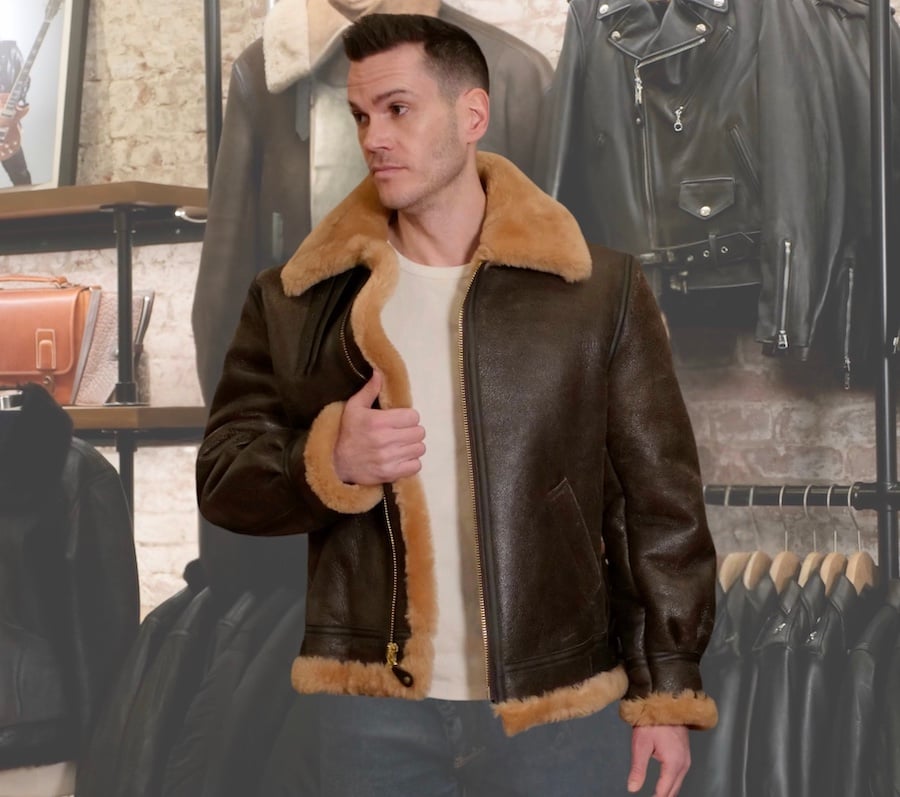
“These World War 2 bomber jackets have leatherized sheepskin with a shearling lining, where the animal’s fur is actually on the inside,” Schott explains. “This helps keep you warm and is also moisture-wicking. The leather’s surface has been coated to protect it against the elements.”
The bombers and gunners wore extremely warm type-B jackets because these planes flew at higher altitudes than older aircraft, and the jackets were intentionally roomy to make it easier to swing your arms around when piloting or shooting.
“The B-6 is generally a half-inch fur, whereas the B-3 is three-quarters of an inch,” Schott notes. “And the fur on the inside acted as a moisture-wicking vehicle. The gunners out on the wing had to wear these extremely warm jackets because there was no way of getting heat out there on the wing.”
Made to keep pilots warm in open cockpits, the B-3 is the classic WWII shearling leather "Bomber" jacket — there's practically nothing warmer. (Or cooler.)

How to Style Leather Jackets
- Whatever kind of leather jacket you’re getting, it’s best to wear it casually
- The most subtle and easy-to-wear models are the Cafe Racer, the MA-1, or a delivery jacket
- Pick a model that fits your personal style: motorcycle jackets are more streetwear, flight jackets lean more vintage, and delivery jackets are the most subdued
- Choose your color: brown and black are the go-tos, with brown more classic and mature, black more modern and youthful.
First, choose the type of leather jacket that fits your style. Asymmetrical motorcycle jackets like the Perfecto are, as Schott says, more “in your face.” A delivery jacket is at the other end of the spectrum: simple, subtle, and suited to just about anyone.
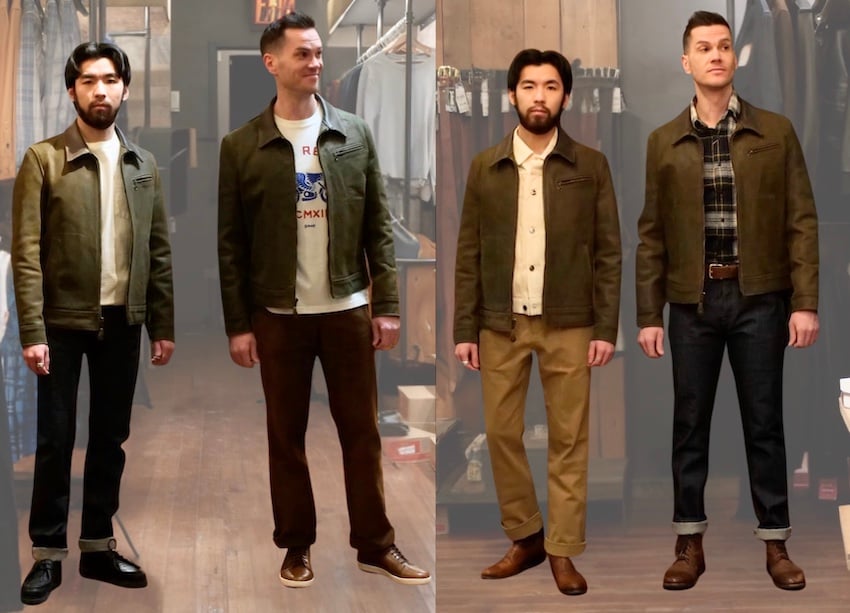
For our money, the best balance of edgy and understated is the Cafe Racer I’m wearing in the two pictures at the start of this section. The other model that’s just as easy to wear would be the more minimalist bomber jacket in the style of the MA-1.
Schott NYC have 100 years' experience making leather jackets in the USA, and the cafe racer is the ideal balance of edgy and relaxed.
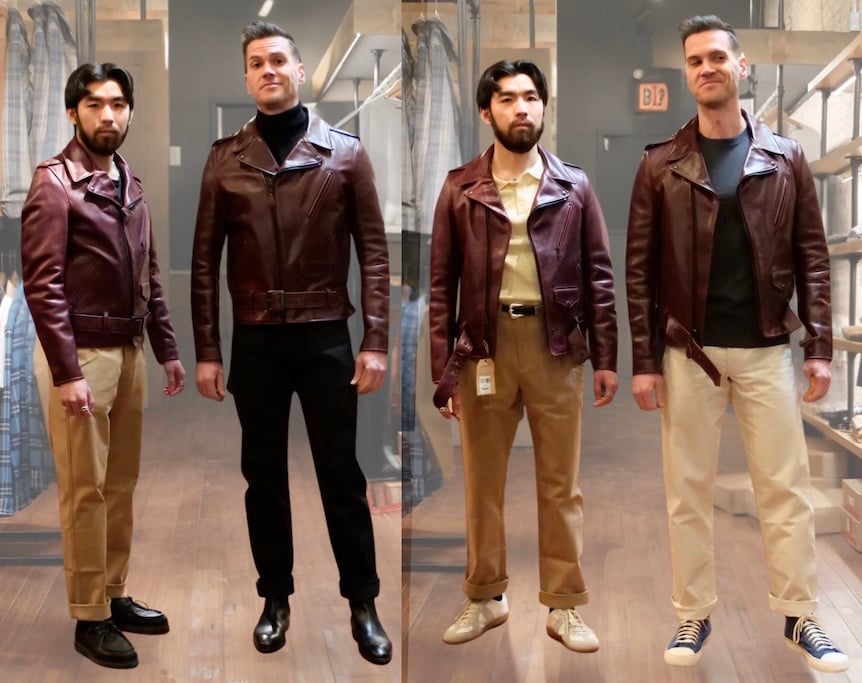
A lot of guys will be tempted by something more hard-edged, like the Perfecto motorcycle jacket I’m wearing with Humphrey above. While it also works just fine with a t-shirt and jeans, it’s a more daring look that you could try with a turtleneck and Chelsea boots, like I’m doing in the picture on the left.
For colors, most leather jackets are black or brown. The easiest and most simple way to pick a color is to look at the clothes you own: if most of them are cooler, like blue, grey, white, black, and burgundy, go with a black jacket. If your wardrobe leans more toward warm tones — khaki, brown, olive — then a brown jacket will match more.

Lastly, leather jackets are casual. Don’t get me wrong: they’re high-end, luxury pieces. But that doesn’t mean they’re not casual: don’t pair one with a tie or Oxford shoes.
The best default outfit for a leather jacket is jeans with a t-shirt or Henley. They also go well with workwear fabrics like chinos, denim, and canvas. If you want a button-up shirt, a casual flannel or chambray is the best bet — don’t go any dressier than smart casual, like an Oxford cloth button-down.
Further Reading
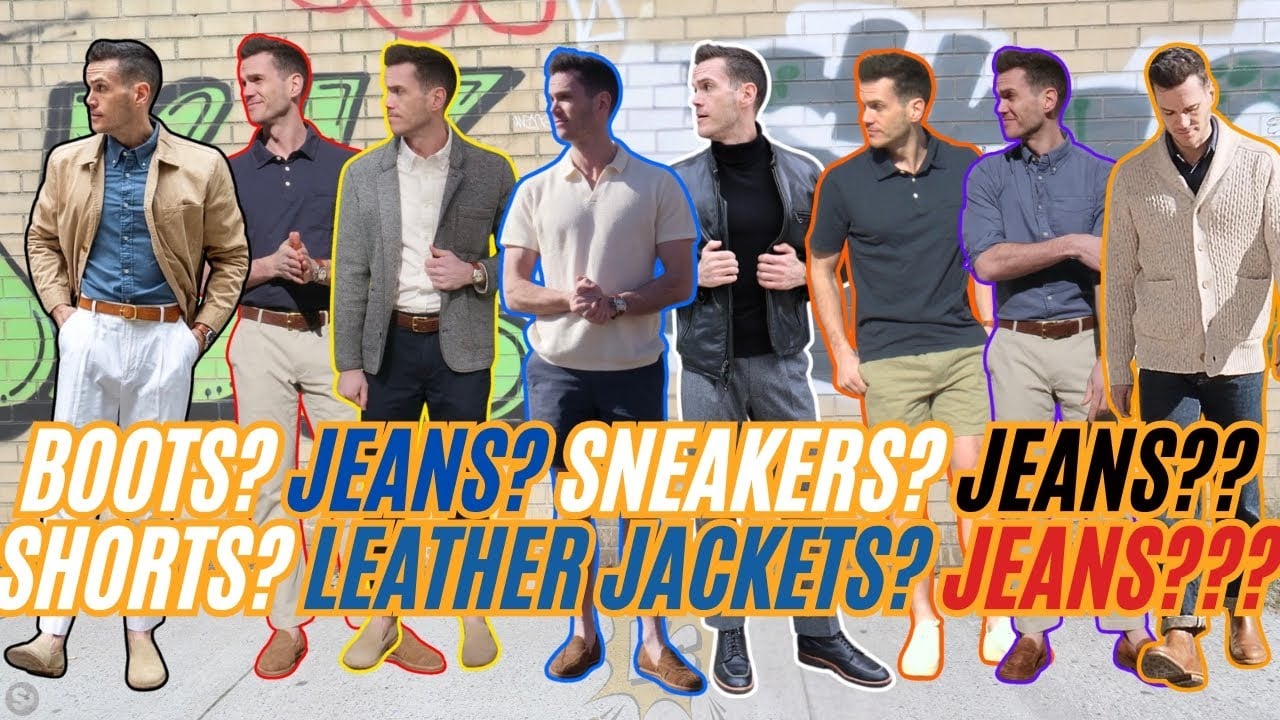
WTF Does a ‘Smart Casual Dress Code for Men’ Mean?
We take a look at how to dress well while keeping things casual. Learn more →
How to Care For Leather Jackets
- Leather jackets require minimal care
- You only need to condition them when they are very dry
Leather jackets are incredibly durable and don’t need much care. Leather boots take a lot more punishment and need conditioning at least once a year, but jackets have easier lives.
The average person can go a few years before conditioning a leather jacket, but if yours gets a lot of hard wear or gets caught in the rain, it’ll lose its moisturizing oils more quickly.
If your jacket is dry, you can tell if it needs conditioning: drop some water on it. If it sits on the surface, it’s fine. If it vanishes into the leather, then your jacket is thirsty. Schott recommends using a basic conditioner like Lexol, but for more guidance, we have an entire article about how to clean and care for leather jackets.

Wrapping Up Leather Jacket Types
Hopefully, we helped you choose the perfect type of leather jacket to fit your style. There are many other models out there (anyone can buy some leather and make a weird jacket out of it), but the majority of them fit into those five categories — and you can find all of them at Schott NYC’s website!

